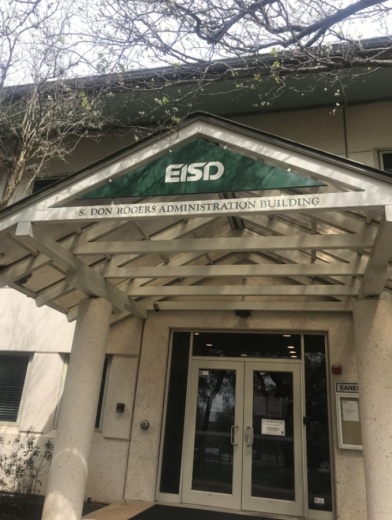During an April 13 special meeting, the EISD board of trustees reviewed a drafted resolution regarding the status of federal Elementary and Secondary School Emergency Relief funds, or ESSER.
The resolution was up for discussion by the board and will be considered for approval at the district’s next meeting later this month.
ESSER was provided by the U.S. Congress in two parts, ESSER I and ESSER II, to provide financial assistance to help school districts address the ongoing impact of the COVID-19 pandemic, according to TEA.
Texas public schools were allotted $1.3 billion in the first round of ESSER. During an April 14 State Board of Education presentation, TEA Commissioner Mike Morath said that money was used to fund the hold-harmless provision in the 2019-20 school year, which ensured that school districts received state funding based on their projected enrollment despite attendance declines, he said.
The second and third rounds of ESSER funding, amounting, respectively, to $5.5 billion and $12.4 billion, have not yet been distributed to Texas public school districts. Morath said this is because the Legislature is awaiting guidance from the federal government on certain conditions tied to the funding.
“Texas has not allocated these funds to local education agencies to allow for planning and budgeting to address unfinished learning for the children of Texas,” EISD’s draft resolution states.
According to EISD trustees, other states have already allocated these funds to school districts or provided plans for their administration.
“There is some debate at the state Capitol on whether or not there’s going to be a distribution of funds from federal dollars to public schools,” trustee Heather Sheffield said.
Morath promised during the April 14 presentation that federal funding is on the way to school districts, but he did not clarify how much districts would receive or when they would receive it.
EISD’s resolution recommends that the TEA allocate these federal dollars to Texas school districts without extending the agency’s control by placing additional restrictions on how these funds can best be utilized across the state.
The resolution also states the board's belief that the TEA should not provide this funding in place of funds already due to school districts through the Foundation School Program and Available School Fund, which is the primary source of state funding to school districts, according to the TEA.
Other Texas school districts, including Ector County ISD and Coppell ISD, have also passed resolutions of this nature, according to Sheffield, who said that, locally, Austin ISD and Leander ISD are having similar discussions.
“We want the money to flow to the districts so that we can use it to overcome the COVID issues that we’ve had,” Sheffield said.
This fiscal relief could help EISD and surrounding districts recover from a decline in revenue caused by the pandemic. A lack of revenue from district facility rentals, the higher cost associated with educating amid the pandemic and other related factors have caused financial challenges for EISD, according to previous board discussions.
Danica Lloyd contributed to this report.





